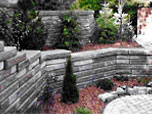 |


|

|
Click for info about a
Retaining Wall

|

|
Click for RetainingWall Design info

|

|
Click For Retaining
Wall Systems

|

|
The ultimate
protection for
Retaining Wall
Systems

|

|
Click for
testimonials on
protecting
Retaining Wall
Systems

|

|
Contact us to
protect your
retaining wall
systems

|
|

|
 |
 |



